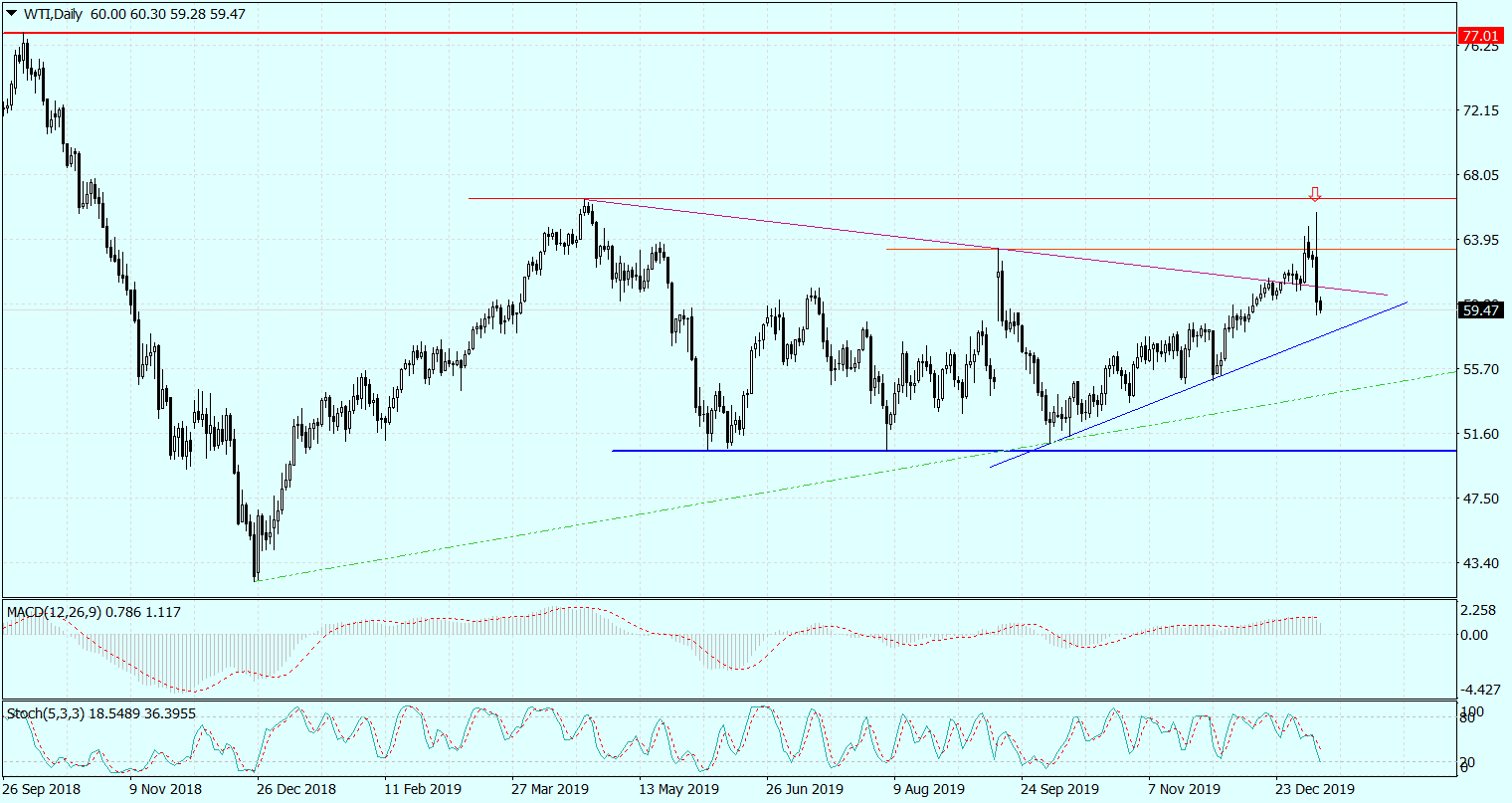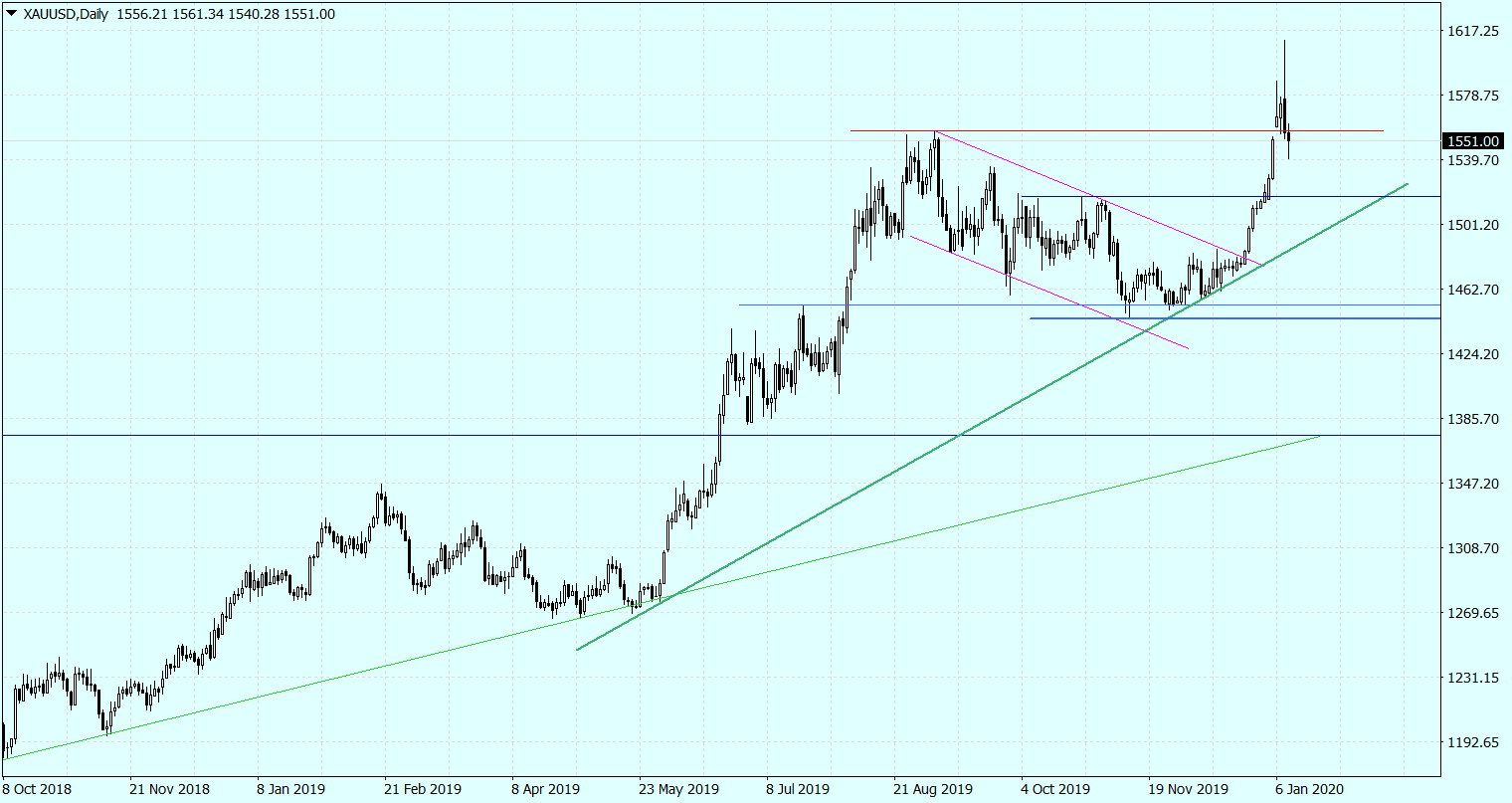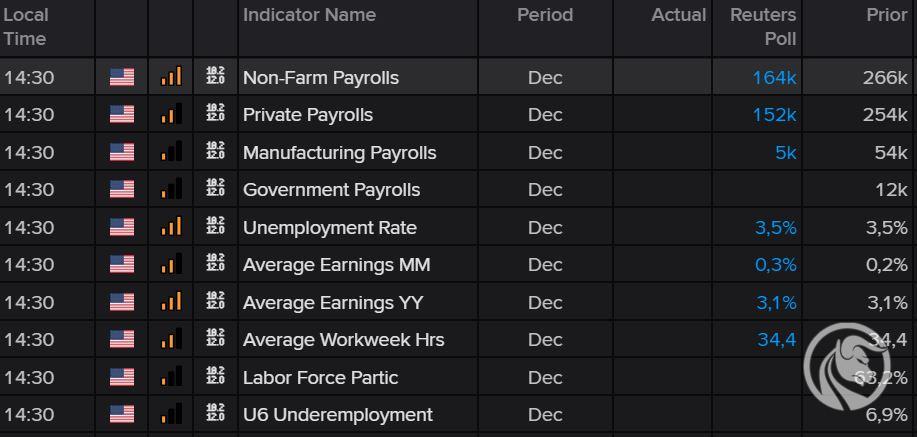Hitchcock's beginning of the year on financial markets
The beginning of 2020 in financial markets could resemble Alfred Hitchcock's films. January started with a really strong blow. At first it was very optimistic. In the first days of the year, the People's Bank of China first announced (yet another) a cut of the required reserve rate by 50 basis points, bringing it to a level of 12,5 percent, which was tantamount to pumping an additional 800 billion yuan into the Chinese economy (about $ 115 billion) . Then US President Donald Trump announced that on January 15 there will be the signing in Washington of the first phase trade agreement between the US and China.
Eyes of investors directed to the Middle East
Once it seemed that these two events, in conjunction with the January effect and expectations of improvement in the European economy, would become an impulse for a crazy rally in the first half of January, the Middle East appeared on the horizon.
At the behest of President Donald Trump, an attack was carried out on a high Iranian general at the airport in Baghdad, whom the US accused of terrorism. Iran has announced retaliation and the markets are afraid of the outbreak of war in the Middle East, which has pushed gold prices to almost 7-year highs, while giving a short impulse to oil price increases and to correction on stock exchanges.
Iran's retaliation actually took place. The country fired on American bases in Iraq, but did it in such a way that there would be no casualties among soldiers. And so the fear of escalation of the conflict in the Middle East has evaporated, which is perfectly illustrated by the current situation on the gold and oil chart.

Chart oil WTI, interval D1. Source: MT4 Tickmill.

Chart XAU / USD (gold), interval D1. Source: MT4 Tickmill.
And so the situation has returned to normal, and investors are slowly looking for more topics. And these will not be missing.
Nadchodzące Wydarzenia
On Friday, January 10, monthly data from the US labor market will be published. Including, first of all, the December employment report in the non-agricultural sector there (forecast: +164 thousand).

Macroeconomic calendar (10.01.2020). Source: Reuters
On Tuesday, January 14, the next season of quarterly results publication on Wall Street officially begins. This time for the fourth quarter of 2019. It will be opened by the following banks: Citigroup, JP Morgan Chase and Wells Fargo. The company's results for the next three weeks will warm up emotions on the stock exchanges.
On January 15, the aforementioned US-China trade agreement will be signed. Signing this document may still trigger an explosion of optimism, translating into increases in risky assets, but this will be the last such chord. This agreement is mostly discounted. One should not forget that this is a preliminary agreement, and further negotiations will be ongoing and will be much more difficult. Especially during the presidential campaign in the USA.
Data from China will also be published throughout the next week. The most important ones will appear on Friday. Then, reports on GDP dynamics in the fourth quarter of 2019 will be published (forecast: 6,0% y / y).
The next week of January will be marked by the meeting of the European Central Bank (January 23) and preliminary readings of January PMI indices from Japan, through Europe to the USA (January 24).
The FOMC meeting (January 29) and US GDP data for the fourth quarter of 2019 (January 30) will be the highlight of the last week of January. The UK will also formally leave the European Union.
It is true that January promises to be very interesting?






















![Forex Club – Tax 9 – Settle tax on a foreign broker [Download the Application] Forex Club - Tax 9](https://forexclub.pl/wp-content/uploads/2024/02/Forex-Club-Podatek-9-184x120.jpg?v=1709046278)
![Trading View platform – solutions tailored to the needs of traders [Review] trading view review](https://forexclub.pl/wp-content/uploads/2024/03/trading-view-recenzja-184x120.jpg?v=1709558918)
![How to connect your FP Markets account to the Trading View platform [Guide] fp markets trading view](https://forexclub.pl/wp-content/uploads/2024/02/fp-markets-trading-view-184x120.jpg?v=1708677291)
![How to invest in ChatGPT and AI? Stocks and ETFs [Guide] how to invest in chatgpt and artificial intelligence](https://forexclub.pl/wp-content/uploads/2023/02/jak-inwestowac-w-chatgpt-i-sztuczna-inteligencje-184x120.jpg?v=1676364263)






![Izabela Górecka – “Success on the market depends not only on knowledge, but also on emotional stability” [Interview] Izabela Górecka - interview](https://forexclub.pl/wp-content/uploads/2024/04/Izabela-Gorecka-wywiad-184x120.jpg?v=1713870578)
![WeWork – the anatomy of the collapse of a company valued at $47 billion [WeWork, part II] wework bankruptcy story](https://forexclub.pl/wp-content/uploads/2024/04/wework-bankructwo-historia-184x120.jpg?v=1711729561)
![Adam Neumann – the man who screwed up Softbank [WeWork, part AND] adam neumann wework](https://forexclub.pl/wp-content/uploads/2024/04/adam-neumann-wework-184x120.jpg?v=1711728724)


![The most common mistakes of a beginner trader - Mr Yogi [VIDEO] Scalping - The most common mistakes of a beginner trader - VIDEO](https://forexclub.pl/wp-content/uploads/2024/03/Scalping-Najczestsze-bledy-poczatkujacego-tradera-VIDEO-184x120.jpg?v=1711601376)
![Learning patience: No position is also a position - Mr Yogi [VIDEO] Scalping - Learning patience - No position is also a position - VIDEO](https://forexclub.pl/wp-content/uploads/2024/03/Scalping-Nauka-cierpliwosci-Brak-pozycji-to-tez-pozycja-VIDEO-184x120.jpg?v=1710999249)
![When to exit a position and how to minimize losses - Mr Yogi [VIDEO] Scalping - When to exit a position and how to minimize losses - VIDEO](https://forexclub.pl/wp-content/uploads/2024/03/Scalping-Kiedy-wyjsc-z-pozycji-i-jak-minimalizowac-straty-VIDEO-184x120.jpg?v=1710336731)





![Learning patience: No position is also a position - Mr Yogi [VIDEO] Scalping - Learning patience - No position is also a position - VIDEO](https://forexclub.pl/wp-content/uploads/2024/03/Scalping-Nauka-cierpliwosci-Brak-pozycji-to-tez-pozycja-VIDEO-300x200.jpg?v=1710999249)





Leave a Response